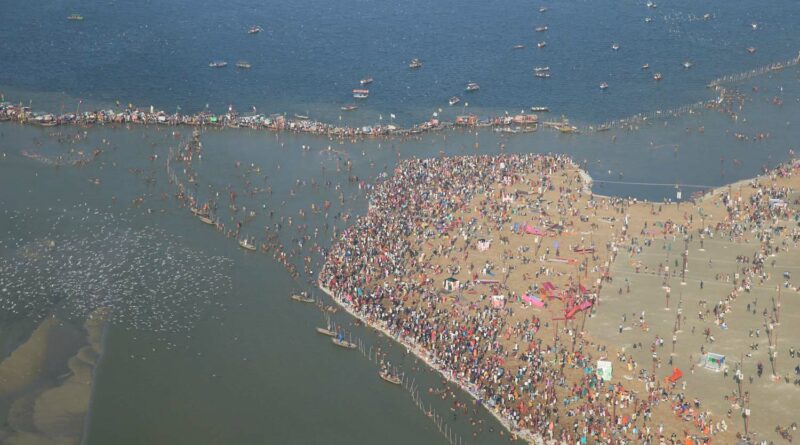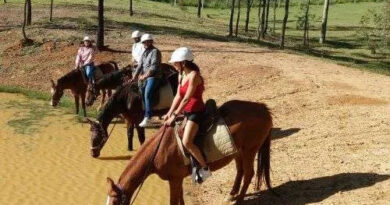Best Places to Visit During the Kumbh Mela
The Kumbh Mela, held every 12 years in India, is a spectacular spiritual gathering that draws millions of pilgrims, tourists, and spiritual seekers from around the world. The event is celebrated at four major locations in India—Prayagraj, Haridwar, Ujjain, and Nashik—each with its own unique religious significance. If you’re planning to attend this grand festival, it’s not just about the holy baths and spiritual rituals; it’s also about exploring the vibrant culture and historical landmarks surrounding these sacred cities. Here’s a guide to the best places to visit during the Kumbh Mela.
1. Prayagraj (Allahabad)
Prayagraj is one of the most important Kumbh Mela destinations, hosting the event at the confluence of three rivers—the Ganges, Yamuna, and the mythical Sarasvati. Known as the Triveni Sangam, this is where millions of pilgrims gather to take a holy dip, believed to cleanse them of sins.
Best places to visit in Prayagraj during Kumbh Mela:
- Triveni Sangam: The most sacred place in Prayagraj, where the three rivers meet. It is the main bathing site during the Kumbh Mela.
- Kumbh Mela Tent City: During the Mela, the Tent City becomes a hub of activities, with temporary accommodations, food stalls, spiritual discourses, and cultural performances.
- Akbar Fort: A historical fort built by the Mughal emperor Akbar, this site is a testament to India’s rich Mughal heritage.
- Hanuman Mandir: A revered temple dedicated to Lord Hanuman, known for its peaceful atmosphere.
- Allahabad Fort: Another Mughal architectural marvel that stands as a symbol of Prayagraj’s history.
2. Haridwar
Haridwar is one of the seven holiest places in Hinduism and is famous for its ghats along the Ganges. The Kumbh Mela in Haridwar takes place every 12 years, with pilgrims flocking to the city to witness the Ganga Aarti and to bathe in the holy river.
Best places to visit in Haridwar during Kumbh Mela:
- Har Ki Pauri: The most famous ghat in Haridwar, where the evening Ganga Aarti is a mesmerizing experience. During Kumbh, it is a vibrant place of worship.
- Chandi Devi Temple: This ancient temple dedicated to Goddess Chandi offers a stunning panoramic view of the city and the Ganges.
- Maya Devi Temple: One of the Siddha Peethas, this temple is dedicated to the Goddess Maya, known for its historical and religious importance.
- Shanti Kunj: A spiritual center where pilgrims can meditate and learn about Hindu rituals and practices.
- Bharat Mata Mandir: A unique temple dedicated to Mother India, representing the country’s cultural and spiritual unity.
3. Ujjain
Ujjain, located in Madhya Pradesh, is famous for being one of the four locations of the Kumbh Mela. The Shipra River is the central feature, and devotees gather here to take a dip and seek blessings from Lord Shiva.
Best places to visit in Ujjain during Kumbh Mela:
- Mahakaleshwar Temple: A sacred shrine dedicated to Lord Shiva, it is one of the twelve Jyotirlingas and an important site during the Kumbh Mela.
- Shipra River Ghats: The ghats on the Shipra River are a key part of the Kumbh experience in Ujjain, with holy dips taking place at auspicious times.
- Kal Bhairav Temple: Dedicated to Lord Bhairav, this temple is an important spiritual site, where devotees offer their prayers for protection.
- Vedh Shala (Observatory): Built by Maharaja Jai Singh II, this ancient astronomical observatory is a fascinating historical site in Ujjain.
- Bhartrihari Caves: These caves are dedicated to the ancient sage Bhartrihari, who is believed to have meditated here.
4. Nashik
Nashik, located in Maharashtra, is another major location for the Kumbh Mela. It is a significant pilgrimage site for Hindus, with the Godavari River flowing through the city. The Kumbh Mela in Nashik is considered to be one of the most vibrant and culturally rich.
Best places to visit in Nashik during Kumbh Mela:
- Trimbakeshwar Temple: A revered temple dedicated to Lord Shiva, it is also a place where the holy river Godavari originates. The temple is an important pilgrimage site.
- Pandav Leni Caves: A collection of ancient Buddhist rock-cut caves, these offer a historical and peaceful retreat in Nashik.
- Ram Kund: A sacred spot where it is believed that Lord Rama performed various rituals, and a key place for pilgrims during the Kumbh Mela.
- Saptashrungi: A temple located on a hill dedicated to Goddess Saptashrungi, offering a scenic trek and spiritual experience.
- Kalaram Sansthan Temple: An ancient temple dedicated to Lord Rama, known for its spiritual significance and serene atmosphere.
5. Other Noteworthy Attractions
While the Kumbh Mela is the main event, the cities that host it also offer a range of spiritual, historical, and cultural sites to explore. Some places worth considering are:
- Sangam at Allahabad: In addition to Triveni Sangam, Allahabad has other significant spots like Anand Bhavan (Jawaharlal Nehru’s ancestral home) and Chandrashekhar Azad Park.
- Rishikesh (near Haridwar): Known for yoga and meditation, Rishikesh offers tranquility and a chance to explore temples, ashrams, and adventure activities like rafting.
- Kedarnath and Badrinath: If you are extending your pilgrimage, these high-altitude temples in Uttarakhand are considered among the Char Dhams and can be visited alongside Kumbh Mela.
Conclusion
The Kumbh Mela is more than just a religious festival; it is a celebration of India’s spiritual, cultural, and historical heritage. The best places to visit during the Kumbh Mela are not only sacred but also offer the opportunity to immerse oneself in the region’s traditions, architecture, and stunning landscapes. Whether you’re there for spiritual reasons or cultural exploration, attending the Kumbh Mela and visiting these iconic sites will leave you with memories of a lifetime.




